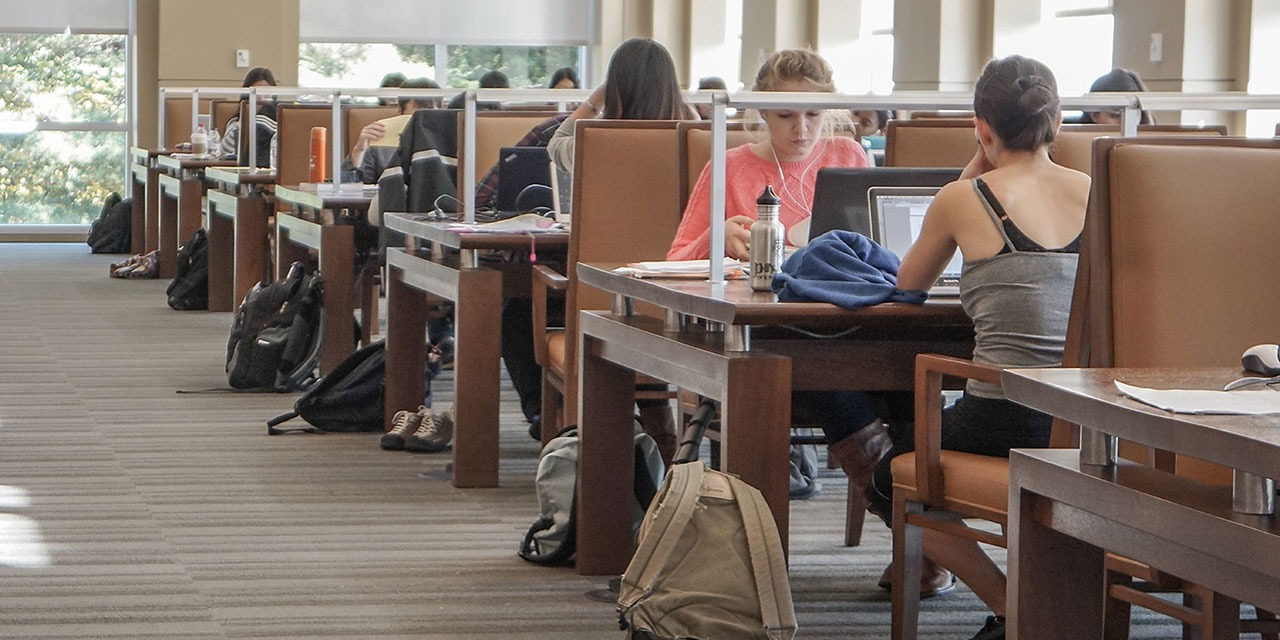
The Trump White House has taken the paddle to some of the nation’s most famous universities over anti-Semitism, politicization, and other dubious behavior. But the resulting fireworks have obscured a more prosaic cause of campus dysfunction: college students are bored and aimless because they have too much time on their hands.
As we explain in a new Manhattan Institute issue brief, today’s students spend far less time on academics than previous generations. Economists Philip Babcock and Mindy Marks have noted that in 1961, the average full-time, four-year college student studied about 24 hours a week. By 2010, that had dropped to 14 hours. Today, it’s more like ten hours or less. We’ve normalized a campus culture in which full-time students treat 20 hours of class and studying as a full week’s work.
Finally, a reason to check your email.
Sign up for our free newsletter today.
Further, as sociologists Richard Arum and Josipa Roksa observed a decade ago in Academically Adrift, few courses these days “require substantial reading or writing,” and students rarely interact with faculty outside of class. In 2024, three-quarters of first-year students reported no assignment that entailed more than ten pages of writing. Two in five had none longer than five pages. Over half of seniors reported no assignment of more than ten pages during their final year. Meantime, grade inflation has exploded, especially at selective colleges. Harvard’s average GPA climbed from 3.0 in 1967 to 3.8 in 2022.
A Covid-induced decline in expectations has reinforced this trend. Sarah Rose Cavanagh, a psychology professor at Simmons University in Boston, told the Chronicle of Higher Education that pandemic-era accommodations for late work gave students an “expectation of endless flexibility.” Today, as compared with even five years ago, faculty report that “far fewer students show up to class,” “those who do [show up] avoid speaking when possible,” “many skip the readings or the homework,” and “they have trouble remembering what they learned.”
Faculty have little incentive to maintain rigorous expectations—and plenty of reasons to go with the flow. More assignments mean more work and more hassle, creating a strong temptation to keep workloads light and grades high. A study of Rate My Professors, the site students use to review faculty anonymously, found that more demanding instructors tend to receive lower ratings. The result is a collective-action problem: even faculty frustrated by declining standards are reluctant to be the lone hard case.
With or without Washington’s cage-rattling, colleges need to do better. Young adults have a deep-seated impulse to seek connection and meaning. If they don’t find it in their studies, they’ll look elsewhere—whether through protest encampments or on social media. Far better, for everyone involved, if that energy gets directed toward real educational engagement instead of performative stunts.
What might help?
The Trump administration can start by reminding colleges that, in accepting federal student aid, they’re obliged to abide by the federal definition of a credit-hour, which “approximates not less than one hour of classroom or direct faculty instruction and a minimum of two hours of out-of-class student work each week.” A typical three-credit course should entail nine hours of work weekly, so full-time students should devote 36 hours a week to their studies. If they’re not, universities should be asked to audit student activity and demonstrate compliance or risk losing access to federal student aid.
University leaders can address the collective-action problem by setting clear, institution-wide expectations for student workload—aligned with credit-hour requirements and designed to ensure that full-time students engage in a full week of learning. Academic freedom protects what faculty teach and research, but institutional leaders have every right to set shared norms around workload and grading rigor. These norms should be explicitly factored into tenure, promotion, and compensation decisions.
To enforce these expectations, campus leaders should conduct annual reviews of coursework and regularly survey student time use. Institutions should also participate in measures like the National Survey of Student Engagement and make the results publicly available.
What’s needed most is a cultural reset. Students and faculty have grown far too comfortable with a desultory status quo, in which faculty agree to pretend that they’re teaching if students pretend they’re learning. At elite schools like Harvard and Columbia, this arrangement has yielded a hugely expensive and destructive exercise in theater. It’s past time that students got back to work.
Photo by JHU Sheridan Libraries/Gado/Getty Images
City Journal is a publication of the Manhattan Institute for Policy Research (MI), a leading free-market think tank. Are you interested in supporting the magazine? As a 501(c)(3) nonprofit, donations in support of MI and City Journal are fully tax-deductible as provided by law (EIN #13-2912529).
Source link


















